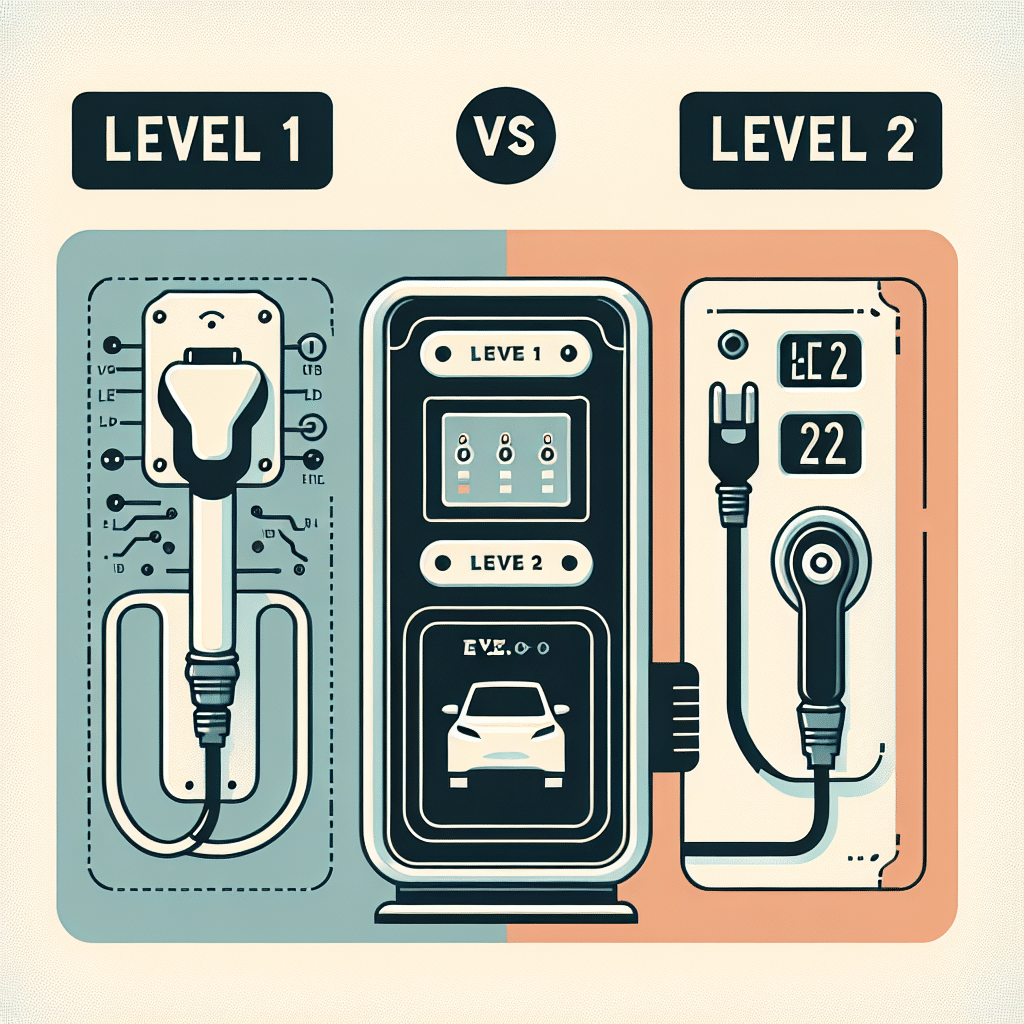Understanding Level 1 and Level 2 EV Chargers
Electric vehicles (EVs) are revolutionizing the automotive industry, providing sustainable alternatives to traditional gasoline-powered cars. As the number of EVs increases, it is essential to understand the different charging options available. Among them, Level 1 and Level 2 EV chargers are the most commonly used. Each type has distinct characteristics that cater to various user needs, charging speeds, and installation requirements.
What is Level 1 Charging?
Level 1 charging refers to the most basic method for charging an electric vehicle. This method utilizes a standard 120-volt household outlet that can be found in homes and buildings across the United States.
Specifications of Level 1 Chargers
- Voltage: 120 volts
- Amperage: Usually around 15 to 20 amps
- Power Output: Approximately 1.4 kW to 1.9 kW
- Charging Speed: Adds about 3 to 5 miles of range per hour of charging
- Typical Charging Time: Full charge can take anywhere from 8 to 20 hours, depending on the vehicle’s battery size.
Advantages of Level 1 Chargers
- Accessibility: Almost everyone has access to a standard outlet, making Level 1 chargers convenient for overnight charging.
- Cost-effective: No need to install specialized equipment; simply use the EV’s included charging cable.
- Simplicity: User-friendly and requires minimal setup.
Limitations of Level 1 Chargers
- Slow Charging Rate: The low power output means that charging can take a long time, making it impractical for those who drive significant distances daily.
- Not Ideal for Large Battery Packs: Larger EVs with bigger battery capacities may take longer than 20 hours to fully charge using Level 1.
What is Level 2 Charging?
Level 2 charging is a more advanced charging option that utilizes a 240-volt electrical supply. This type of charger is commonly found in homes, workplaces, and public charging stations.
Specifications of Level 2 Chargers
- Voltage: 240 volts
- Amperage: Ranges from 16 to 80 amps, with most residential chargers around 30 to 40 amps
- Power Output: From 3.3 kW to 19.2 kW
- Charging Speed: Adds about 10 to 60 miles of range per hour of charging
- Typical Charging Time: Full charge can take anywhere from 4 to 8 hours, depending on the vehicle’s battery capacity.
Advantages of Level 2 Chargers
- Faster Charging: Significantly reduces charging time, allowing most EVs to recharge overnight or during a workday.
- Better for Daily Use: Ideal for individuals who rely on their EV for regular commuting or have higher daily mileage.
- More Charging Options: Many public and commercial locations offer Level 2 charging stations, providing more versatility for charging on the go.
- Smart Features: Many newer Level 2 chargers come with smart technology, including mobile app integrations, scheduling, and energy management features.
Limitations of Level 2 Chargers
- Installation Cost: Requires professional installation, which can involve upgrading the electrical panel and associated costs.
- Limited Home Setup: Not everyone has access to a 240-volt outlet at home, particularly in older buildings.
Comparative Summary: Level 1 vs. Level 2 Chargers
| Feature | Level 1 | Level 2 |
|---|---|---|
| Voltage | 120 volts | 240 volts |
| Amperage | 15-20 amps | 16-80 amps |
| Power Output | 1.4-1.9 kW | 3.3-19.2 kW |
| Charging Speed | 3-5 miles/hour | 10-60 miles/hour |
| Typical Charging Time | 8-20 hours | 4-8 hours |
| Installation Requirements | Plug-and-play on standard outlet | Requires professional installation |
| Suitable for | Overnight charging, low mileage | Daily use, long commutes |
Use Cases for Level 1 and Level 2 Chargers
Knowing when to use Level 1 or Level 2 charging can save time and enhance the EV experience.
Level 1 Charging Use Cases
- Residential Charging: Ideal for users who have a predictable driving pattern with low mileage.
- Occasional EV Owners: People using their EVs infrequently may benefit from this straightforward option without the need for a dedicated charger.
Level 2 Charging Use Cases
- Daily Commuters: Perfect for individuals with longer daily drives or those who frequently use their EVs for more than commuting.
- Commercial Settings: Businesses that want to provide charging for employees can consider installing Level 2 chargers.
- Public Charging Stations: Many EV charging networks use Level 2 stations, allowing drivers to quickly charge while on the go.
Conclusion
When choosing between Level 1 and Level 2 EV chargers, it is essential to consider factors like driving habits, charging needs, and installation costs. While Level 1 chargers offer convenience and accessibility, Level 2 chargers provide faster and more versatile charging solutions for everyday use. Understanding the differences and potential applications of each type can help consumers make informed decisions that best fit their electric driving lifestyle.
